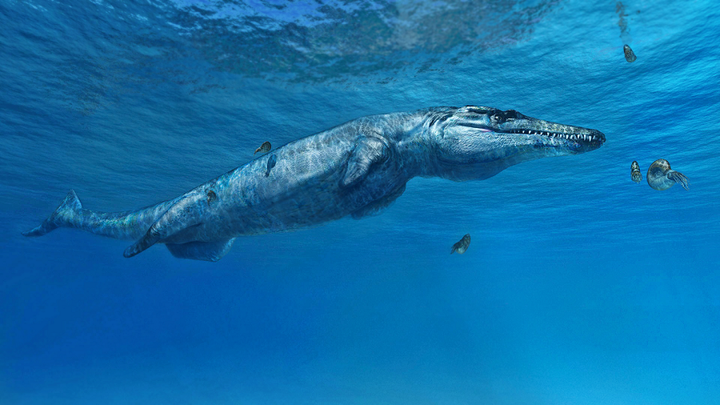It’s no Loch Ness monster, but a team at the University of Edinburgh has uncovered a new species of prehistoric sea monster that populated European oceans over 163 million years ago.
The ancient reptile - Ieldraan melkshamensis - was nicknamed the ‘Melksham Monster’ after the town in England where it was unearthed in 1875, and has been stored in the Natural History Museum archives ever since.
But now a restudying of the (heavily damaged) fossils has raised questions about our understanding of early aquatic reptiles, and when exactly they first evolved.

Dr Steve Brusatte, said: “The Melksham Monster would have been one of the top predators in the oceans of Jurassic Britain, at the same time that dinosaurs were thundering across the land.”
Although the fossil has been in human hands for almost 150 years, it was only the latest study that shed light on the fossil being an entirely new species.
The new species was a 10-foot-long animal that lived in the warm, shallow seas that covered much of what is now Europe, with distinctive features such as powerful jaws and big, serrated teeth that allowed it to feed on large prey.
Mark Graham, Senior Fossil Preparator, Natural History Museum, said: “The specimen was completely enclosed in a super-hard rock nodule with veins of calcite running through, which had formed around it during the process of fossilisation.
“The work took many hours over a period of weeks, and great care had to be taken to avoid damaging the skull and teeth as they became exposed.”
Not only is this an exciting discovery in itself, but it has also changed what we know about the timeframe in which it existed.
Until this point it was believed that the sub-family of prehistoric crocodiles, to which the species belongs, known as Geosaurini, originated in the Late Jurassic period (between 152 and 157 million years ago)
But the latest study of existing evidence suggests that the group actually arose millions of years earlier, in the Middle Jurassic.
Davide Foffa, School of GeoSciences, said: “It’s not the prettiest fossil in the world, but the Melksham Monster tells us a very important story about the evolution of these ancient crocodiles and how they became the apex predators in their ecosystem.”
